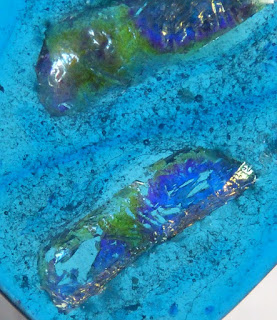I've been lazy about posting, but not totally lazy, I'm now up to 47 mind improving books, although I'm not quite sure how to define "mind improving", you could argue that almost any reading broadens or improves the mind. I'll add some poetry, when I've finished the ones I'm reading. My old English teacher, herself rather a good poet, used to tell us to learn lots of quotations because they were likely to be better than anything we could write! Here's the next lot.
Wolpert:How We Live and Why We Die, the
secret life of cells. Given how
articulate Wolpert is when broadcasting this was disappointingly stodgy to
read. It’s not particularly long, 200 or so small pages, I suspect he tried to
cover too much. A longer fuller illustrated edition might be much better, it
had lots of potential, and should have been brilliant.
Ed. Turney:Science Not Art, Ten
Scientists’ Diaries is as it says, brief diaries over a short period of
time to give some idea how frantic their lives are, not just slaving over hot
computers and test tubes, but a recurring theme is the fierce competition for
funding the next project, and endless forms to that end. Very articulate
people, but all high fliers when chosen, and ten years later many must be at the
top of the tree, Marcus du Sautoy is, of course, now well known. Sadly only two
of the ten are girls, but we’re increasing! I found it interesting enough to order the companion volume, Art Not Chance,
Nine Artists’ Diaries.
Ed. Allen:Art Not Chance, Nine
Artists’ Diaries was not as interesting as the scientist’s ones, which was
paradoxically far more comprehensible. The prose in this one was a bit rambly.
The best by a long way was composer Errolyn Wallen who did the opening music
for the 2012 Paralympics. She’s also done a lovely percussion concerto. Another
interesting coincidence was the rather good poet Jo Shapcott, who we’d heard
talk at the Cheltenham Science Festival, on the Science and Art of Patient Care
on the morning I got to her section.
Brasier: Darwin’s Lost World looks at very
early fossils and explores pre-fossil life, the and reasons for the “Cambrian
Explosion” and how life started & survived at all. Fascinating for the
slightly geeky!
Holmes: The Age of Wonder
explores Science in the late 18th & 19th centuries,
Joseph Banks, William & Caroline Herschel, Humphry Davy and Mungo Park
amongst many others are the stars. Intrigue & rivalry feature strongly,
with financial and political goings on. What’s changed? It’s interesting how
many people were renowned in both worlds of science and the arts in a way that
sadly doesn’t happen now. Davy was a well known, but now largely forgotten,
poet. Samuel Taylor Coleridge was a learned “natural philosopher”. Compulsory
reading for anyone with an interest in history or science, or even the rise of
women’s power. Caroline Herschel is a fine role model.
Capon:Botany for Gardeners I
thought it was time to learn some of the science behind the plants I grow,
having done zoology Alevel they were huge gaps in my understanding, largely
filled by this book. It’s readable for the non-expert, but has gaps and leaves
lots of questions: How does a whole plant revert to the wild type? Can they
communicate insect danger & how? It was also a bit muddly on genetics, but
on the whole good, worth a second read.


















